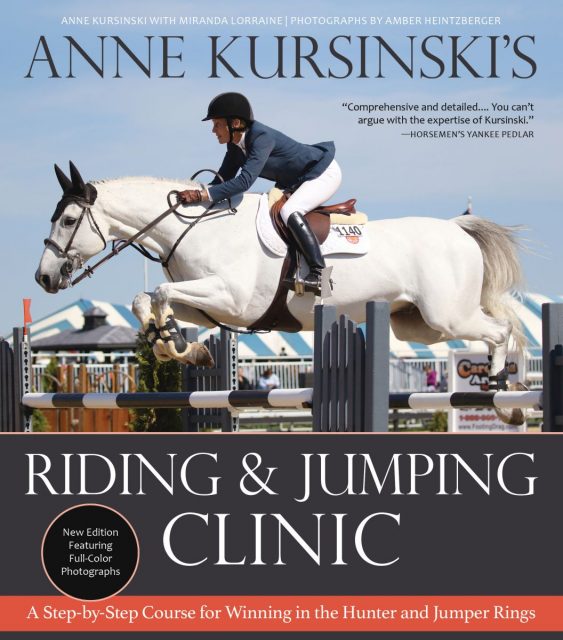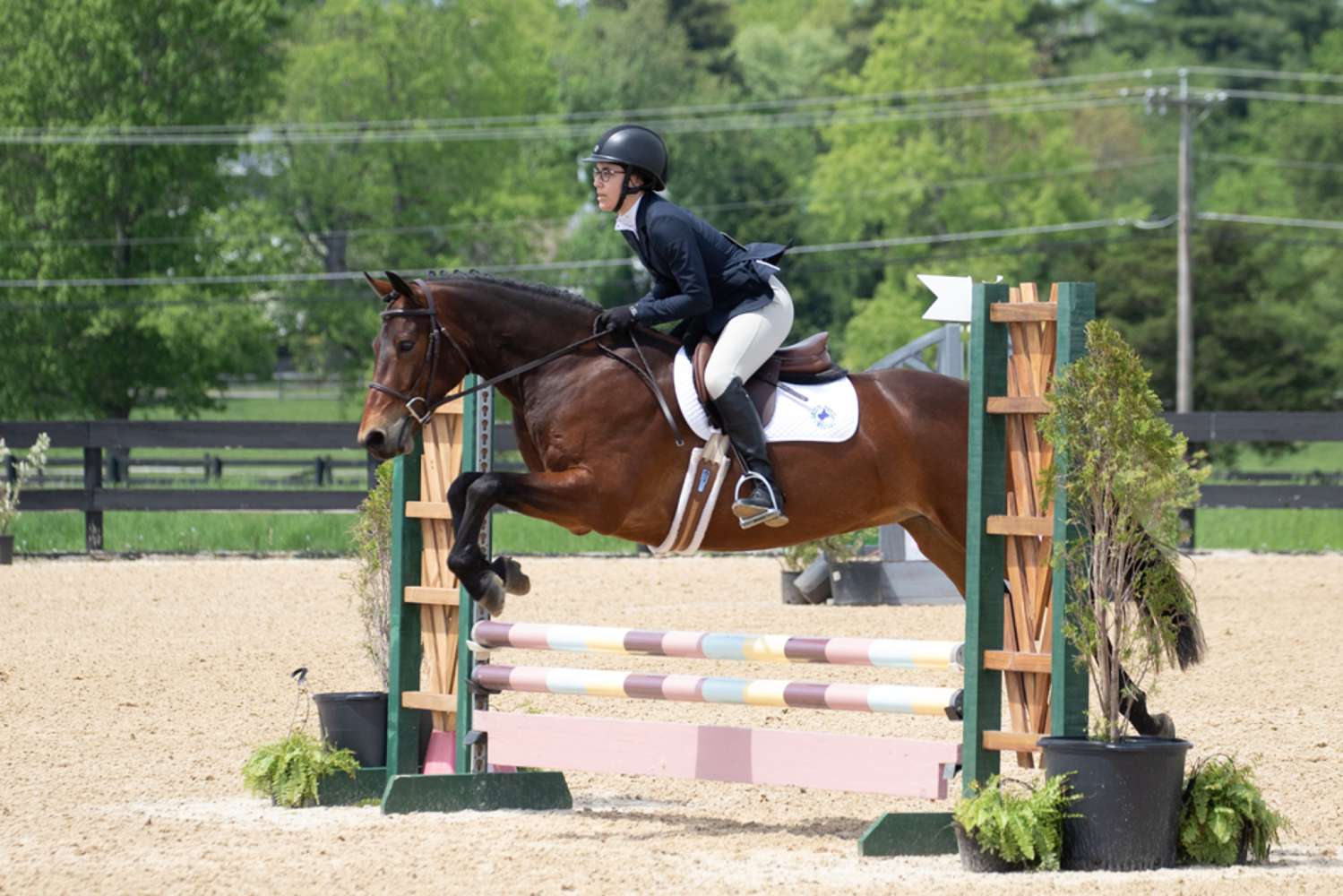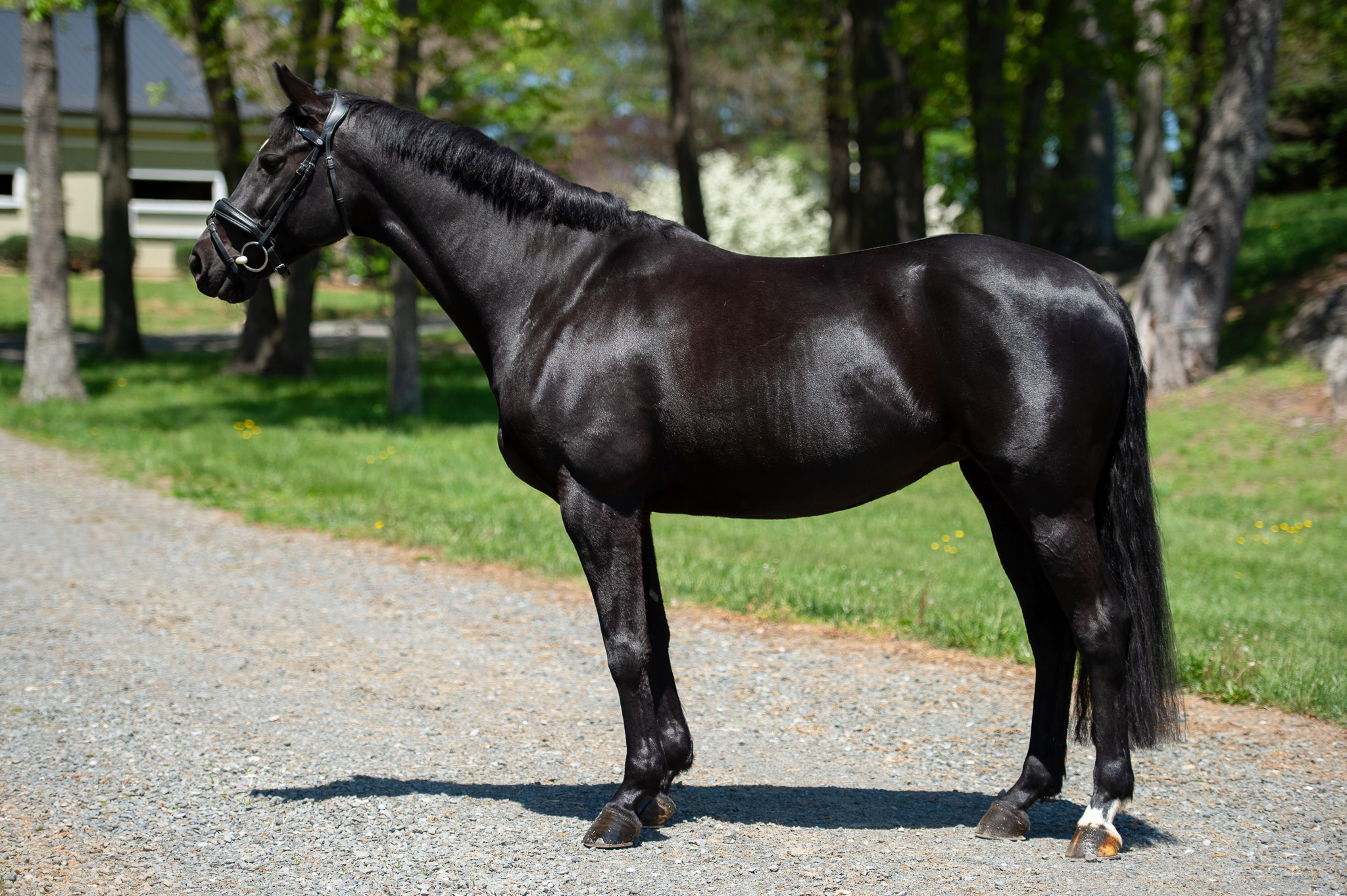Please join us in welcoming new EN contributor and Blogger Contest runner-up Allie Heninger! Allie, or the Autoimmune Equestrian on most platforms, is 25 and resides in Utah with her husband, fiery little NightMare, Curly heart-pony, and the four cats that adopted her. Allie has been riding since she was six years old, and was a hunter/jumper kid transplanted into the amazing world of eventing. She’s a bit of an adult re-rider, as she took a few years off from dedicated and consistent riding while in college after her diagnosis, but is now back at it with determination.
Allie has an autoimmune disease that runs her life a bit, and has started recently working to fully embrace it as the disability that it is, rather than continuing to try to fight against her body and its limitations. Managing a competitive amateur equestrian lifestyle with a malfunctioning immune system and full-time job can be pretty rough some days, but she and her mare are learning as they go – and what she’s learned inspired her to start a new series highlighting the stories of eventers from all walks of life. This series will focus on highlighting the stories of riders with different backgrounds, disabilities, and unusual circumstances – celebrating both our commonalities as equestrians as well as the diversity that makes up our membership.

Photo by Melissa Macleod.
In the summer following my freshman year of college, I got sick very frequently. Over several months, I came down with a few nasty infections, and started experiencing bouts of heavy fatigue, muscle and joint pain, nausea, and fevers at least once a week.
By that winter, in December of 2016, I had tested positive for an autoimmune disease called scleroderma; however, the diagnosis symptoms for scleroderma – or systemic sclerosis – are very specific, and I did not meet all the criteria for an official diagnosis. I also exhibited several symptoms seen in lupus – or systemic lupus erythematosus – although I tested negative.
These results brought me to the diagnosis of an Undifferentiated Connective Tissue Disease, initially explained as the early stages of an autoimmune disease which could potentially progress into a full diagnosis. There is also a chance it may never progress and will remain “undifferentiated” forever.
The most overwhelming symptoms I still face are fatigue, muscle pain, and joint pain. The disease affects my vascular system as well, so my body is very sensitive to extreme temperatures, and I also struggle with some very fun gastrointestinal issues and food intolerances, recurrent infections, and photosensitivity, the last of which is likely one the most difficult to navigate in my riding career. UV exposure is one of the biggest triggers of my symptomatic flares, so I have to be very careful about being out in the sun. In the summer, I try to only ride in the evenings – or mornings when absolutely necessary – so hats, long-sleeved sun shirts, and breezy pants are my best friends, especially at shows.
Although they have thankfully become more manageable with medication and lifestyle adjustments, these symptoms will likely always be present. As it was when I was younger and healthy, horses continue to be my biggest motivator.

Photo by Melissa Macleod.
One of the toughest challenges I’ve faced in my horse life has been accepting that my childhood dreams may not be possible with the body I now have. Whether it be the aspirations to become a professional rider or wanting to run a stable of my own, since my diagnosis, I have been forced to come to terms with a new reality in which I cannot sustain a career with heavy physical involvement.
Due to my lack of a horse, funds, time, and strength, I took a break from riding and competing for a few years after my diagnosis. Adult life without horses was incredibly difficult as I faced these health challenges, and I made several attempts to push beyond my disease, wanting to prove myself wrong and not allow my body to hold me back from my dreams. I tried out being a working student, ran a stable as a barn manager, and worked in the veterinary field, but each time I quickly reached a physical ultimatum in which my body very clearly rejected the lifestyle I was chasing.
What I failed to realize during my repeated endeavors was that my disease and myself have become one; it is not something I can push beyond or conquer, and it will not allow me to ignore the constraints it has put on my life. Rather than fighting it, I had to learn how to not just coexist, but to accept my body for what it is and work with it to accomplish my goals, even if it may be in a different way than I had always anticipated.
Learning the limitations of my body as I returned to riding was incredibly difficult and even emotional at times, especially after growing up as an active, athletic, energetic horse girl. I used to see myself as a talented young rider, but now frequently experience frustration as I try to maintain a lifestyle that used to come effortlessly. Having a clear, strong motivation has been crucial as I navigate life with a temperamental body, and horses are the thing that help me push through the hard days.
Without a driving force, it was too easy to slip into a victimized mindset, to live passively and allow the pain to discourage me. Now that I have a dependent creature out there that is relying on me – my beautiful and ridiculous mare, Harriet – that knowledge reminds me to prioritize the energy I have, rest when I need to, and plan for the future. I have to take care of myself so I can take care of my horse.

Photo by Melissa Macleod.
My life mantra is found in a quote by Ralph Waldo Emerson: “To know even one life has breathed easier because you have lived; this is to have succeeded.” I want to leave the world a bit better and be a source of positivity and honesty. After hiding from and resisting so many aspects of my life for many years, I now try to live openly, sharing my struggles even if I have not yet overcome them.
Focusing on the negativity and the bad days only brought myself and others more sadness, but if all I am able to do is “laugh often and much” despite the pain and challenges, I can bring hope to others who face difficulties like me.
With my unique background and experience as both an equestrian and a person living with an invisible illness, I want to use my differences to empower others of unusual backgrounds to thrive in the equine industry, spread awareness of diversity within the equine industry – from illness, disability, or environmental struggles to racial biases or financial difficulties – promote the inclusion of new methods and resources to improve accessibility in the equine industry, and encourage acceptance and additional support for equestrians facing challenges continuing in the sport.
I am not the only Autoimmune Equestrian, and I hope to be an advocate for invisible illnesses and help other riders who may be struggling with physical limitations to discover ways in which they can still fulfill their dreams, even if their body has other plans.
Eventing is one of the toughest horse sports out there, and I believe anyone facing additional challenges deserves to be recognized. If you are also a person facing challenging or unique circumstances, combating differences and diversity, or living with a “special” body, I would love to hear from you, share your story, and advocate for your differences. Send me an email at [email protected] for the chance to be featured in a future article!



































